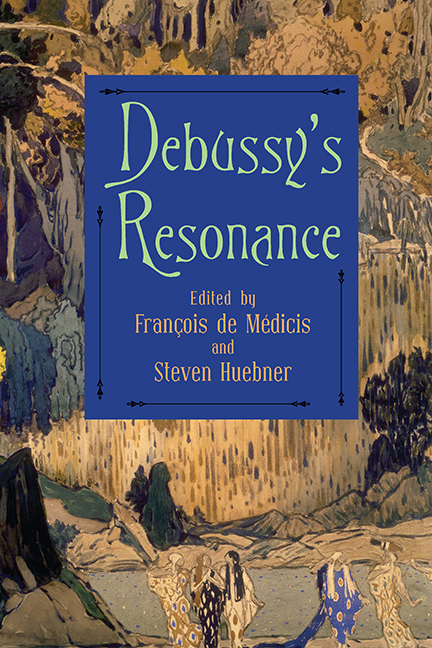Book contents
- Frontmatter
- Contents
- List of Illustrations
- Acknowledgments
- List of Abbreviations
- Introduction
- Part One Historiographical and Editorial Issues
- 1 Debussy Fifty Years Later: Has the Barrel Run Dry?
- 2 The Œuvres complètes de Claude Debussy Thirty Years On
- 3 The Kunkelmann Manuscripts: New Sources for Early Mélodies by Claude Debussy
- 4 “Paysage sentimental”: “Si doux, si triste, si dormant …”
- Part Two Style and Genre
- Part Three History and Hermeneutics
- Part Four Theoretical Issues
- Part Five Performance and Reception
- List of Contributors
- Index
4 - “Paysage sentimental”: “Si doux, si triste, si dormant …”
from Part One - Historiographical and Editorial Issues
Published online by Cambridge University Press: 27 July 2019
- Frontmatter
- Contents
- List of Illustrations
- Acknowledgments
- List of Abbreviations
- Introduction
- Part One Historiographical and Editorial Issues
- 1 Debussy Fifty Years Later: Has the Barrel Run Dry?
- 2 The Œuvres complètes de Claude Debussy Thirty Years On
- 3 The Kunkelmann Manuscripts: New Sources for Early Mélodies by Claude Debussy
- 4 “Paysage sentimental”: “Si doux, si triste, si dormant …”
- Part Two Style and Genre
- Part Three History and Hermeneutics
- Part Four Theoretical Issues
- Part Five Performance and Reception
- List of Contributors
- Index
Summary
“Paysage sentimental” may not be among Debussy's more popular songs, but it played a meaningful role at the start of his career, and its vicissitudes during the twenty-year period following its composition were closely intertwined with his personal and professional life. The song is dated November 1883 in its sole surviving autograph manuscript, which is contained in the so-called Recueil Vasnier, the small volume of thirteen chansons that the young composer presented to Mme Vasnier, his muse and lover, in January 1885, at the time of his departure for the Villa Médici in Rome. The Recueil Vasnier is unusual in several respects. It was clearly conceived as a presentation manuscript, representing Debussy's evident intent to provide his muse with an organized collection of fair copies of a selection from among the songs that he had composed for her and that they had performed together. Yet some of the songs bear signs of revision, sometimes significant, and some are unfinished in various ways. Moreover, they do not constitute a single, coherent collection but rather were arranged in three sections, the second of which was left incomplete.
The first section is a set of five Verlaine settings entitled “Fêtes galantes.” This set has its own title page (on fol. 1r), listing and numbering the five songs: “Pantomime,” “En sourdine,” Mandoline, “Clair de lune,” and “Fantoches.” The individual songs are undated, but from other evidence, including dates inscribed in different manuscript copies, we can infer that they were composed over about a year, between January 1882 and early 1883. They do not seem to be arranged in chronological order, but rather in a sequence designed for performance. Their consecutive performance is further suggested by the fact that Debussy copied the five songs sequentially, without individual title pages, on both rectos and versos from folio 1v through folio 11r, thus ending one folio short of filling the first of the manuscript's four gatherings, each of which originally consisted of six nested bifolios.
On folio 12r, the last folio of the first gathering, Debussy provided a title page for the sixth song in the Recueil, “Coquetterie posthume,” based on a poem by Théophile Gautier. The song itself begins on the verso of the same folio and continues into the second gathering.
- Type
- Chapter
- Information
- Debussy's Resonance , pp. 105 - 124Publisher: Boydell & BrewerPrint publication year: 2018



